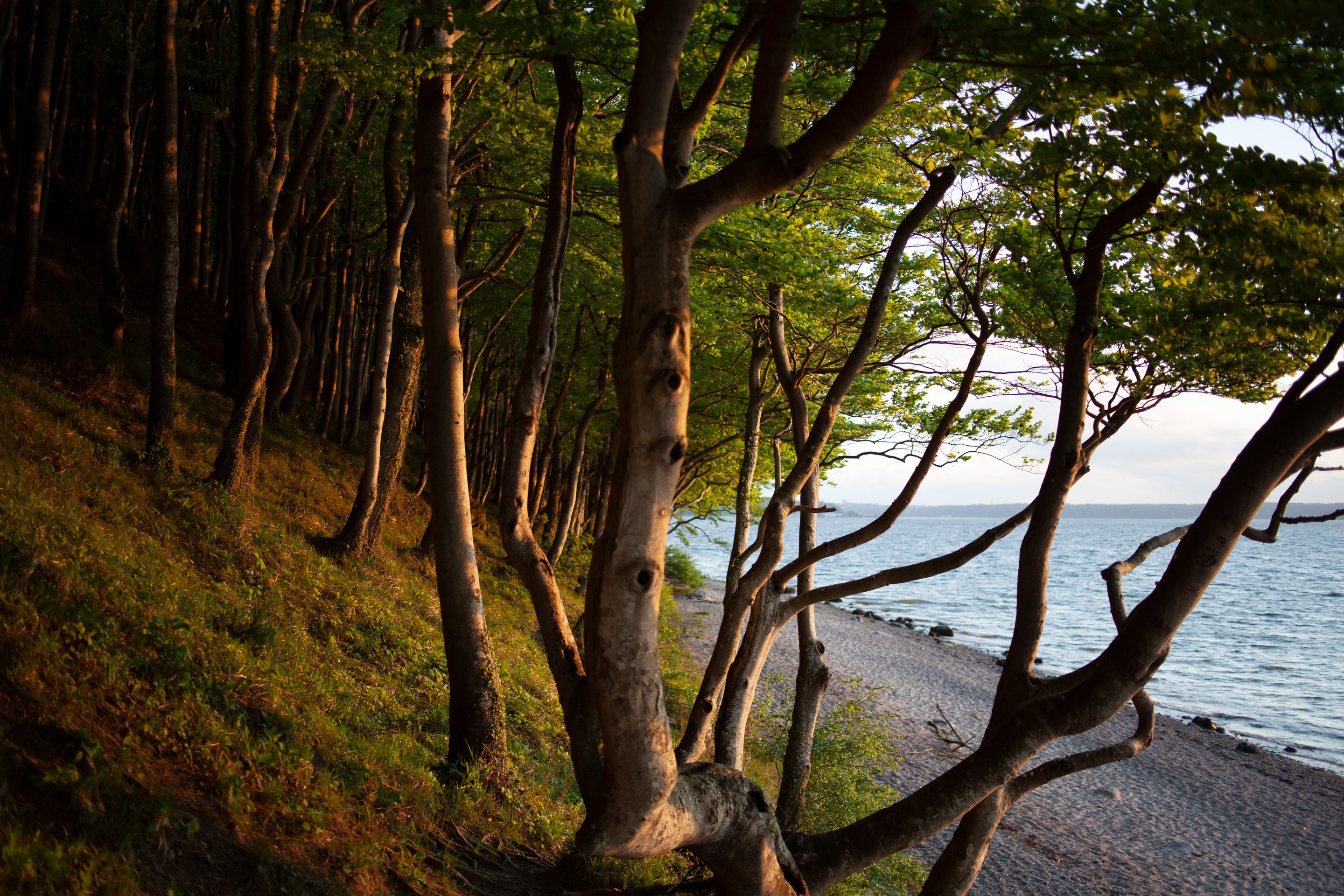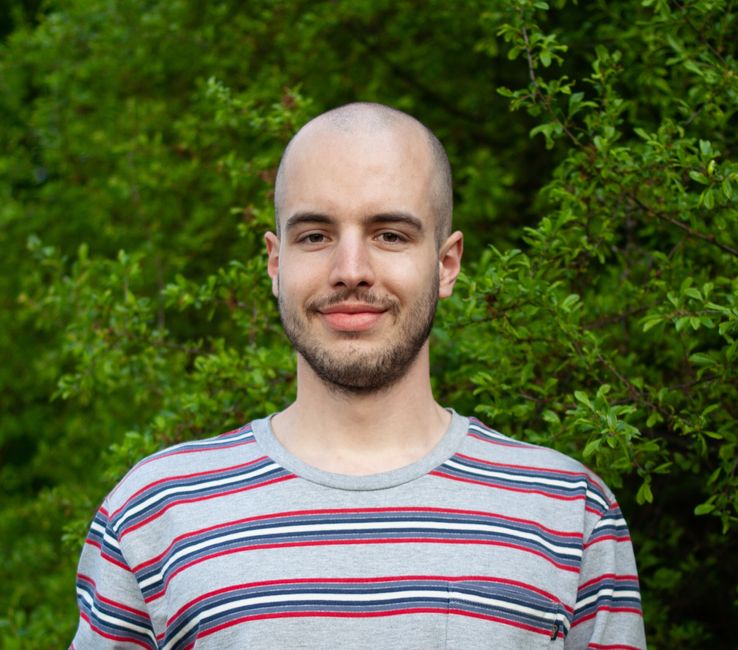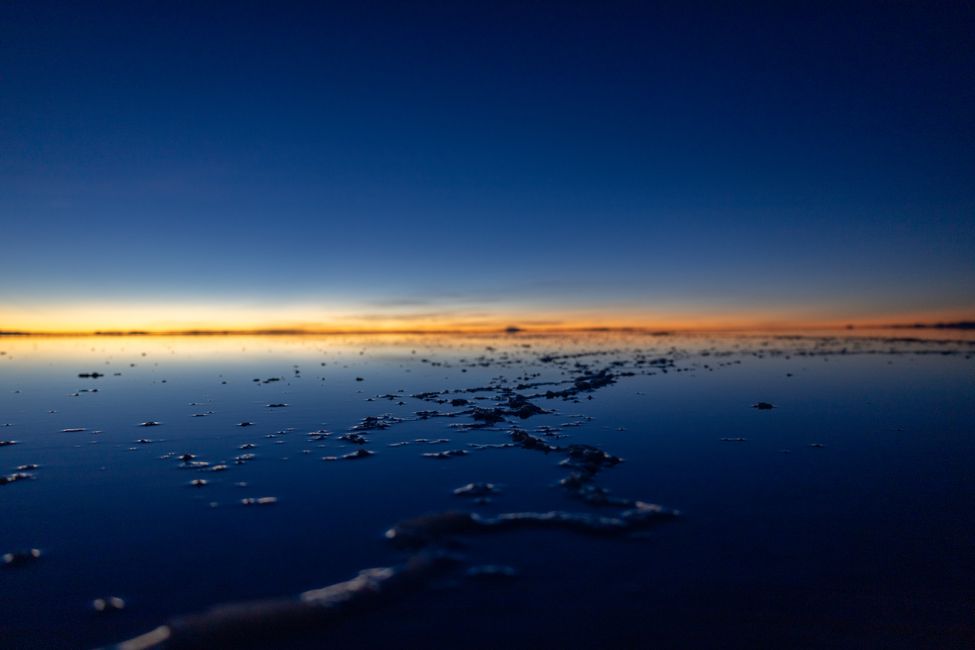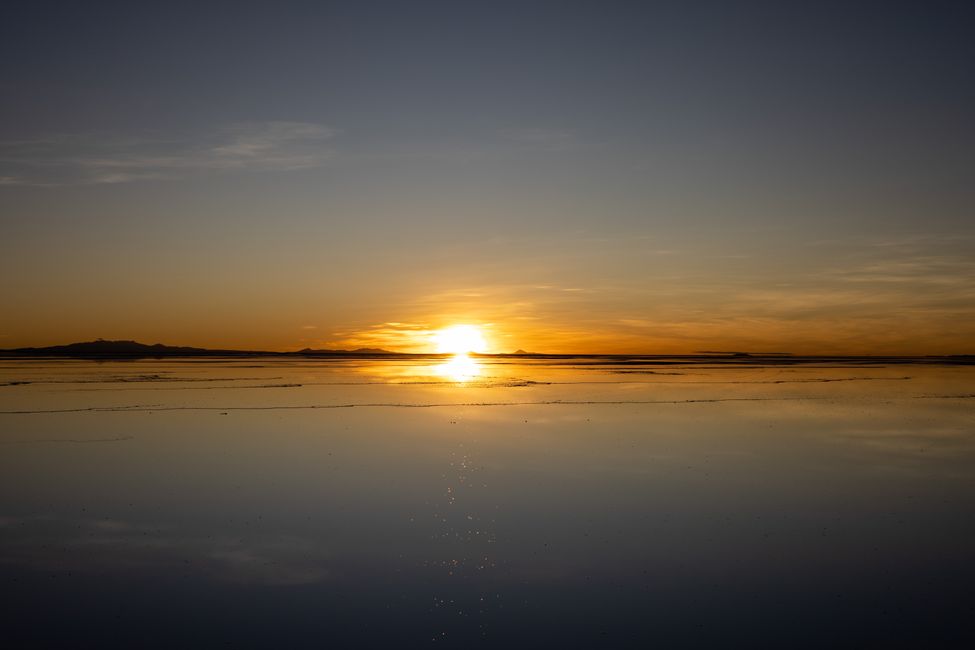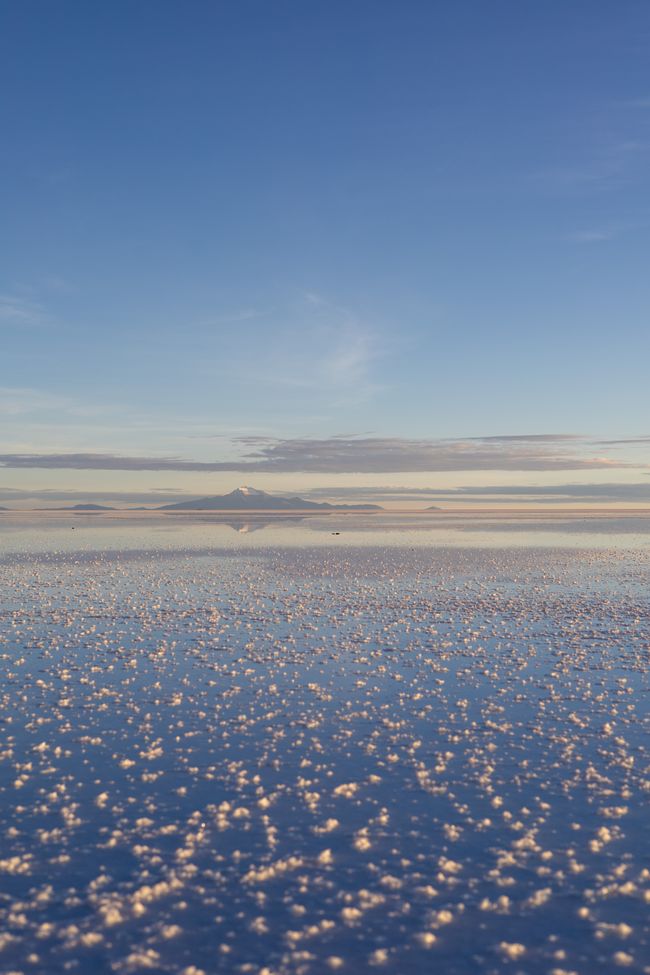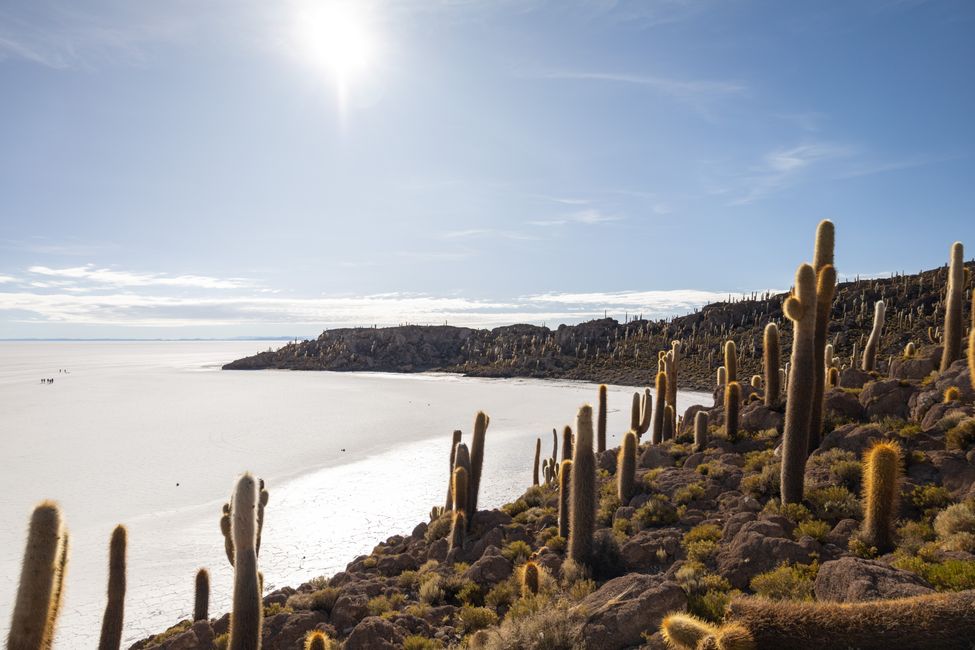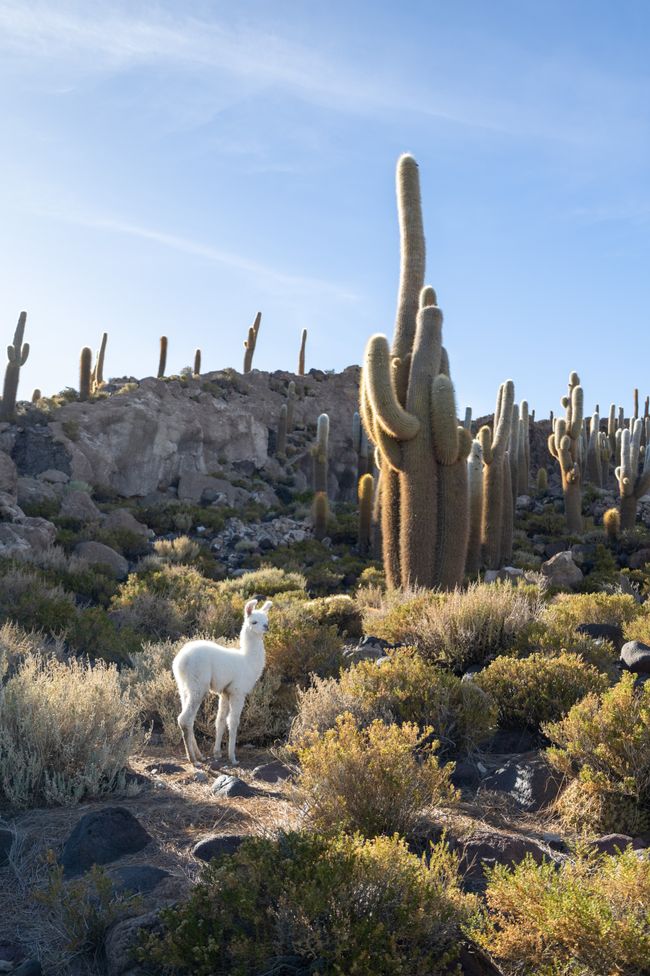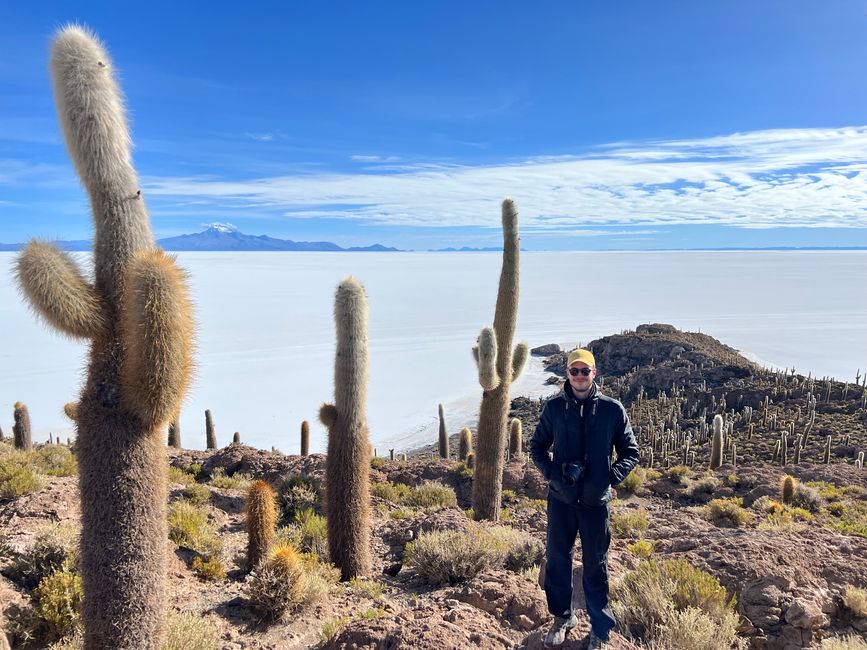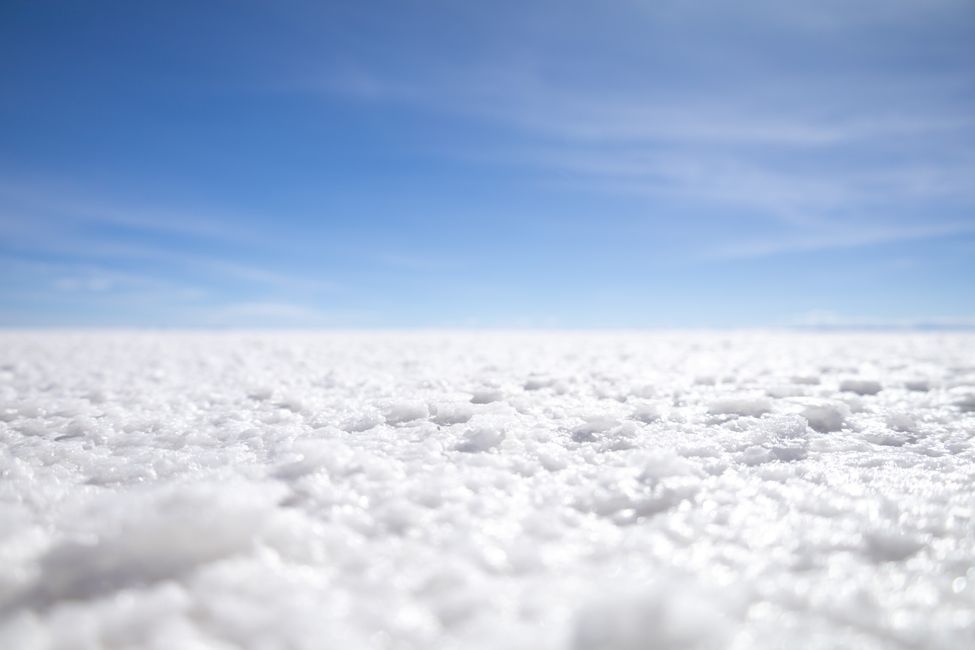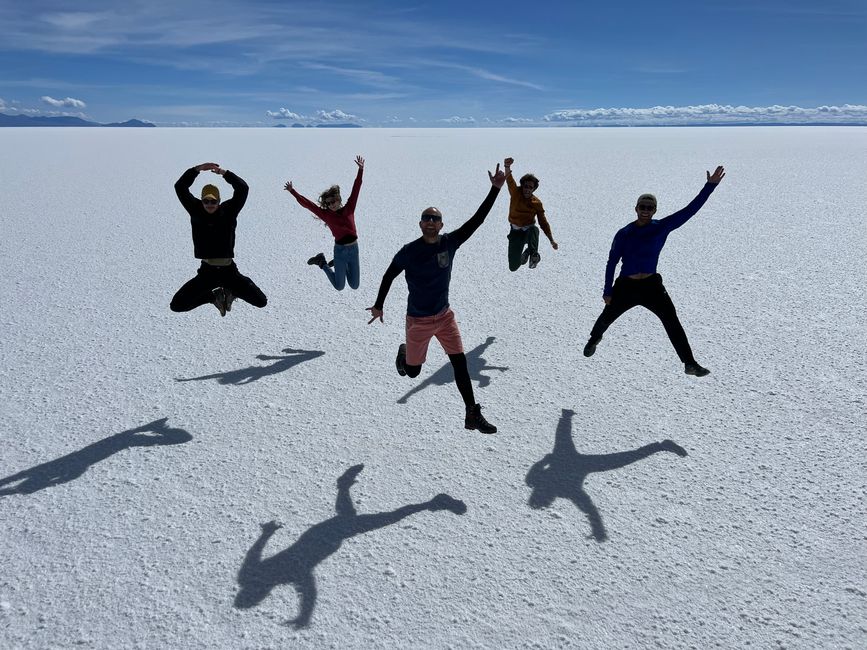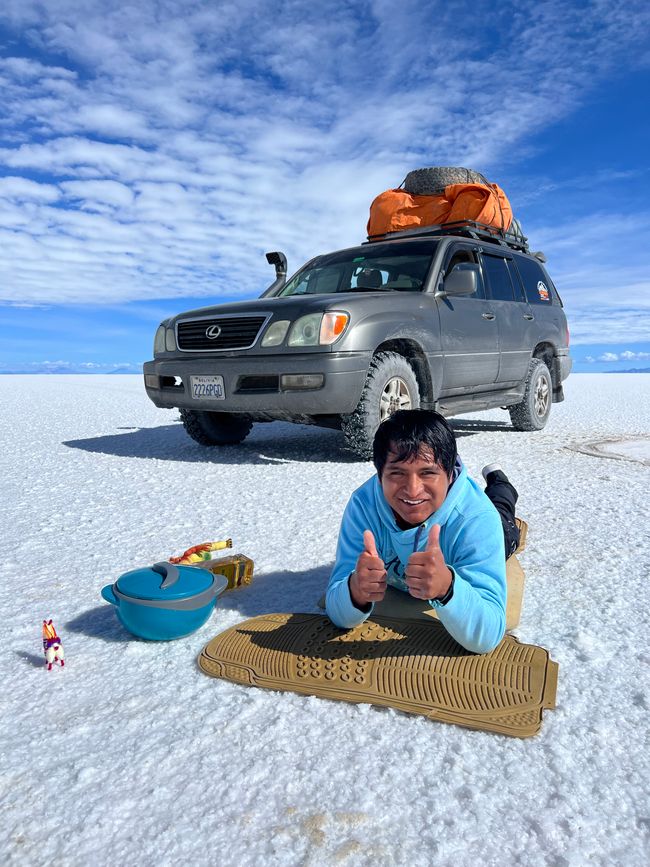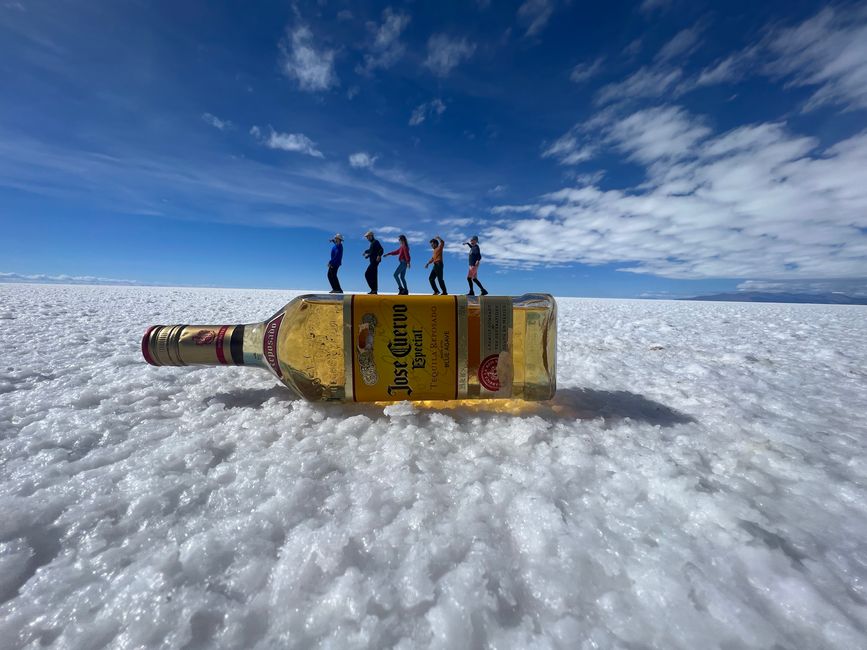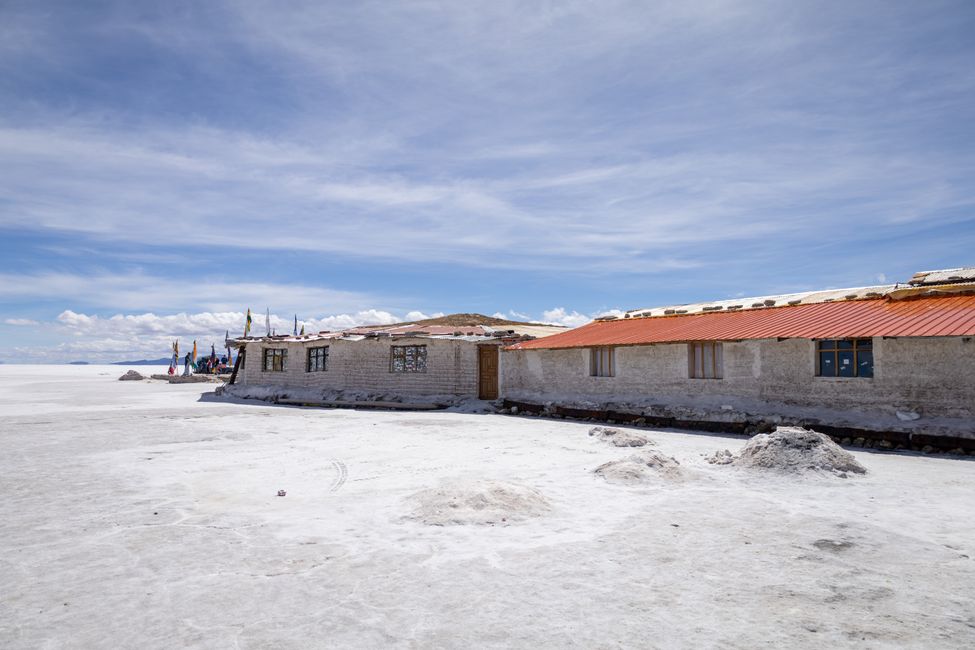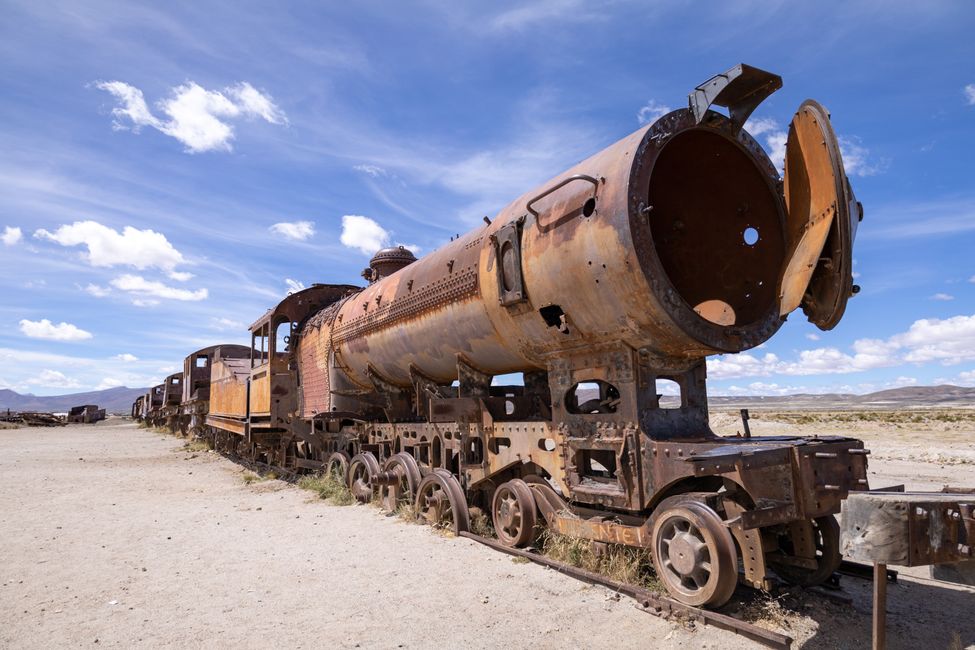01/04/23
ප්රකාශිතයි: 16.04.2023
පුවත් පත්රිකාවට දායක වන්න
Departure is at 5:30 am so we can experience the sunrise over the Salar. A surreal experience. The colors are reflected in the approximately two centimeters of water on the salt crust, formed by the rain. I forgot my hiking shoes and got wet feet, but it's worth it for the view. Only the mountain peaks on the horizon remind us that the salt does not spread infinitely. The upper salt crust is about 10 meters thick, followed by about 100 meters of minerals such as lithium, sulfur, magnesium, and more. The salt deposit is estimated to be about 10 million tons, of which about 25 thousand tons are extracted annually, supposedly only for the salt needs within Bolivia.
We continue to Isla Incahuasi, a group of cacti-covered rocks. After a very sweet breakfast of cereal with fruit yogurt and cake, we walk across the island.
Then we continue driving and stop somewhere in the middle of the salt desert to have a tourist photo shoot. Thanks to the seemingly endless white salt flats, we can play with perspective. Josimar is a pro and brings out his props, such as a rubber dinosaur or cooking pot (there is a video where we are "cooked" in the pot).
We pass by Playa Blanca, the "first salt hotel in Bolivia and the world," built in 1996 and already a museum, and head towards Uyuni (the small town after which the Salar is named).
Outside Uyuni, we make one last stop at the train cemetery, where the decommissioned wagons and steam locomotives from the silver boom about 200 years ago are rotting away.
In Uyuni, we have a farewell dinner with plenty of quinoa.
Together with Chris and Melina, we get local SIM cards. Their activation takes over an hour in the end. You have to register with a Bolivian ID number, the passport number is useless (very tourist-friendly). Luckily, an employee of Uturunku Travel (the agency that organized our tour) is kind enough to help.
I inquire about excursions to climb the Tunupa volcano, which looms over the Salar at over 5000 meters. 500 USD - 200 USD, all very expensive for a day tour, but since hardly any tours have been offered there since the pandemic, I am told that I have to do a private tour.
We spend some more time in the seemingly only cafe where they serve real ground coffee with the other tourist groups. The staff is completely overwhelmed, and it takes a whopping 30 minutes for my Americano to arrive.
With a half-Irish, half-Mainzer woman who has joined our group, we go to eat at one of the tourist huts before everyone except me takes the night bus to La Paz. I stay at the Rummy Hostel in Uyuni because I don't want to give up my plan to climb Tunupa yet.
In the hostel, I meet Vincent, a chef from the sparsely populated center of France. He speaks German about as well as I speak Spanish. So we drink schnapps and he talks in German while I respond in Spanish.
පුවත් පත්රිකාවට දායක වන්න
පිළිතුර

සංචාරක වාර්තා බොලිවියාව
